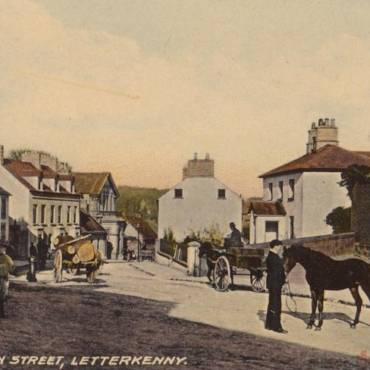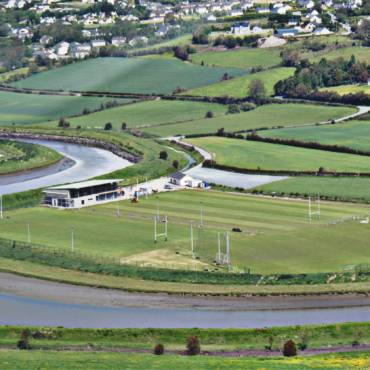ON THIS DAY: 7th April 1880: REV. KINNEAR ELECTED TO HOUSE OF COMMONS
Since his arrival in the town of Letterkenny from Dungannon in 1848, Presbyterian minister Rev. John Kinnear had supported Tenant Rights on public platforms throughout the town and district. This was a time of great poverty and hardship throughout the county when the rights of tenants were being trampled on by unscrupulous landlords.
On the 27th March 1880, Dr. Kinnear decided at the last minute to stand as a Liberal candidate for Co. Donegal in the upcoming Parliamentary elections. In his mandate to his voters he proclaimed:
“Should you return me to Parliament, I shall esteem it to be the proudest era of my life, and my loyalty to the land and to liberty, and my fealty to the memories of the men associated with me thirty years ago in our first Tenant-right campaign will stimulate my efforts to close down, as they and I resolved, another chapter in the history of oppression, and register on the statutes of the realm a new act of Emancipation for the enslaved peasantry of the land.”
Kinnear was running with another Liberal candidate, Thomas Lea against the Tory Marquis of Hamilton. As two candidates were to be returned, the two Liberals united in their campaign with both men appearing at a large rally in the Market Square on Friday April 2nd 1880 just days before the voting began.
The election took place on Wednesday April 7th and Dr. Kinnear was elected with 2,015 votes, defeating the Marquis of Hamilton who had received 1,954 votes, a mere sixty-one votes difference. Thomas Lea topped the poll with 2,274 votes. Dr. Kinnear now had the honour of being the first clergyman in charge of a congregation to sit in the House of Commons.
Great rejoicing took place throughout the county at the election of Dr. Kinnear. The Derry Journal reported that large crowds were cheering in Letterkenny and tar barrels burning when the results were read out. The day after the elections, Kinnear returned to his home town amidst great celebrations:
“When the joyful tidings of the Donegal election…reached Letterkenny, the town was the scene of unbounded joy. Words fail to express the feelings of the Liberals, when they were informed that their townsman, Dr. Kinnear, was returned M.P…At eight o’clock, the town presented a gay appearance. The houses were illuminated, and the Tyrconnell Flute Band, headed by tar-barrels, and followed by about three thousand people, paraded the street. In the midst of the excitement, Dr. Kinnear and party arrived from Lifford and proceeded to Hegarty’s Hotel, receiving such a reception as may be better imagined than expressed.”
A large banner reading “Long live Lea and Kinnear” was carried by torchlight before the wagonette that contained Kinnear and his closest supporters which was drawn by several young men of the town. The procession paraded from the Port Bridge to the Market Square amidst great cheering and excitement. When they arrived at the Square, Dr. Kinnear took to the stand and informed his fellow townspeople:
“In my humble person I care little for the elevation, but I rejoice that in me there is now the triumph of those principles I believe to be founded on justice and righteousness… We have now done what, thirty years ago, a small band of men in Letterkenny resolved to do, to close down another chapter in the history of oppression..”
However, his time in the political arena did not last long. Disillusioned at the increasingly Nationalist aspect growing within Irish politics, Dr. Kinnear did not seek re-election in 1885, concentrating instead on the religious needs of his parishioners of First Letterkenny Presbyterian until his retirement in 1889.
The land question in Donegal and Ireland was eventually defused by a series of Land Acts, which culminated in the 1903 Wyndham Land Purchase Act. Thankfully, Dr. Kinnear lived long enough to see these changes in land ownership at the turn of the century. He died on 8th July 1909 and is buried in the graveyard of Conwal Parish Church.



